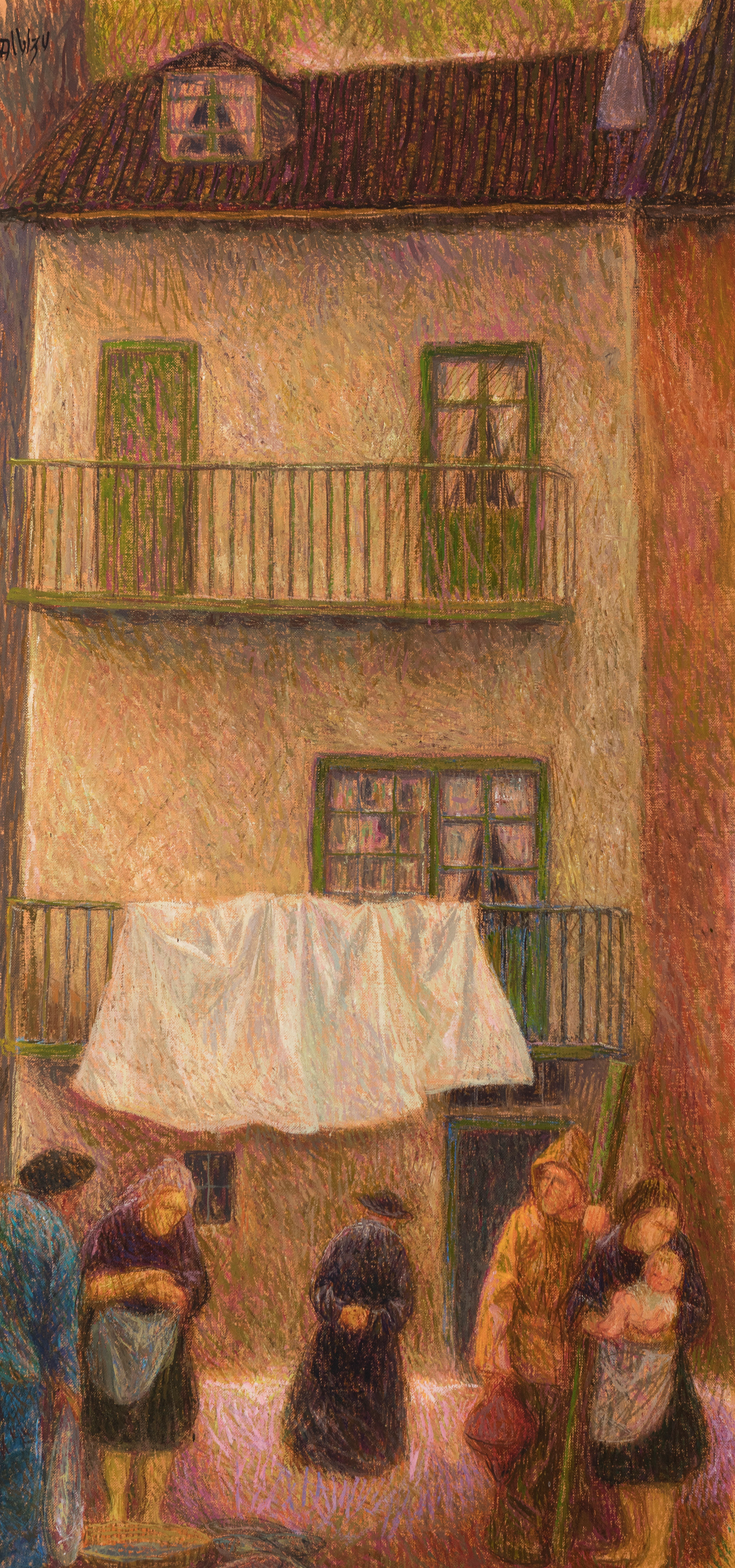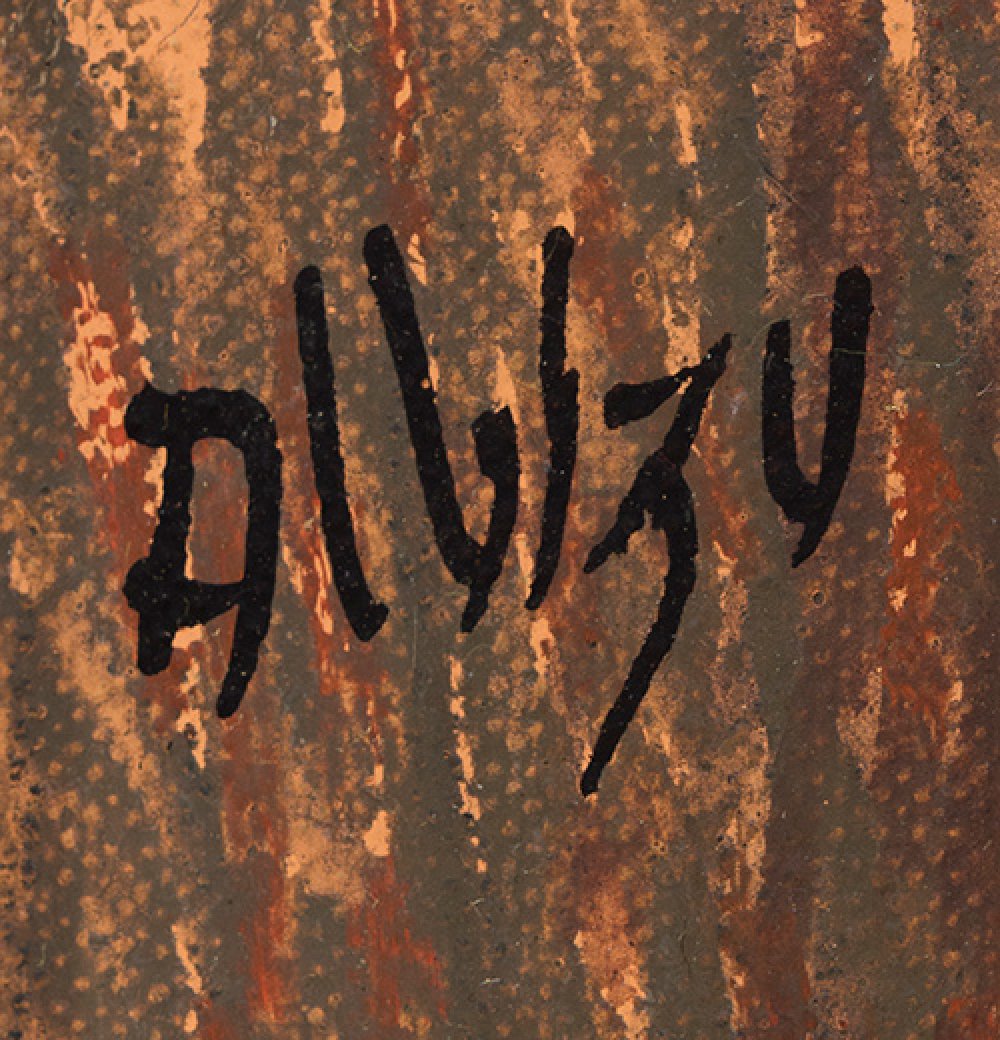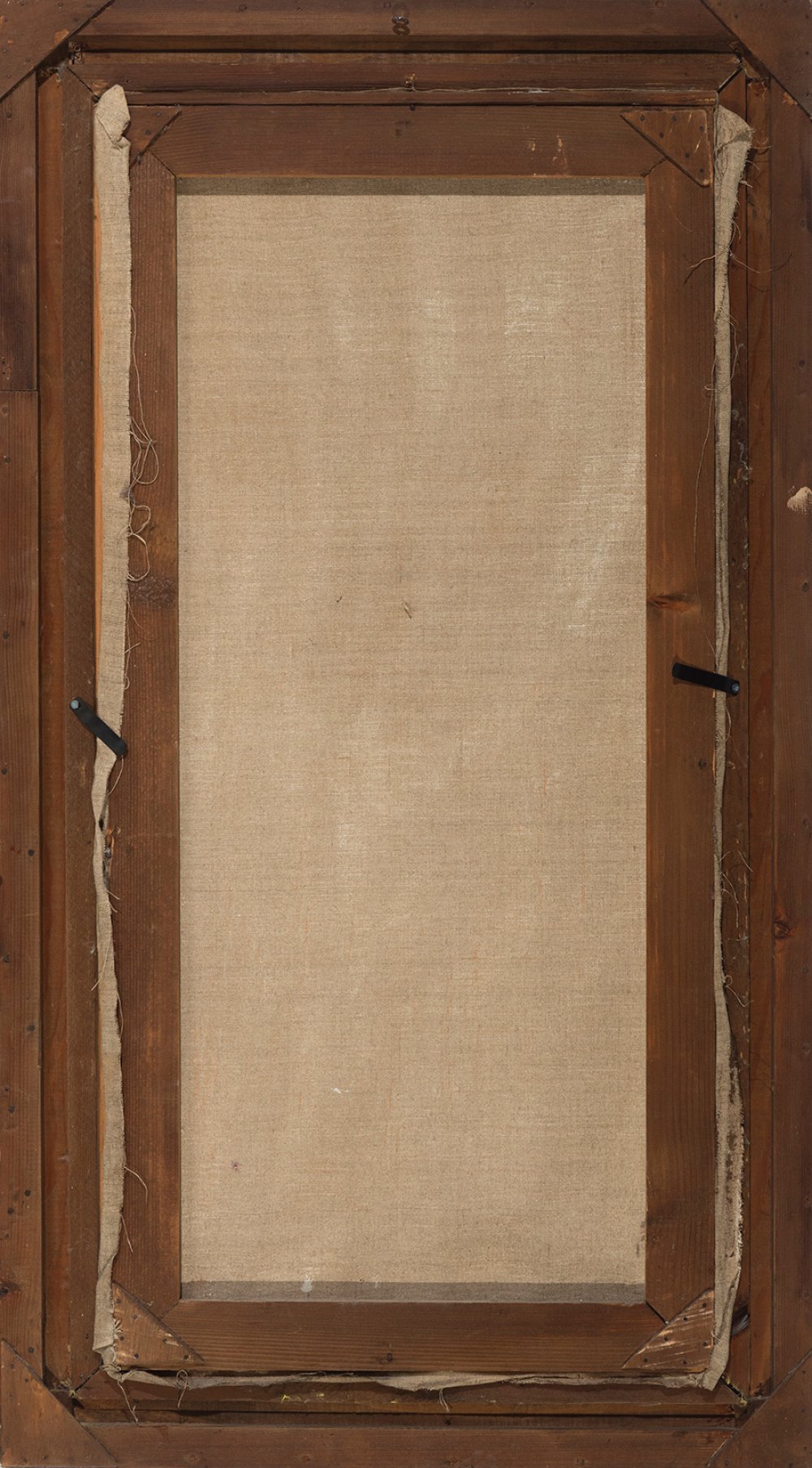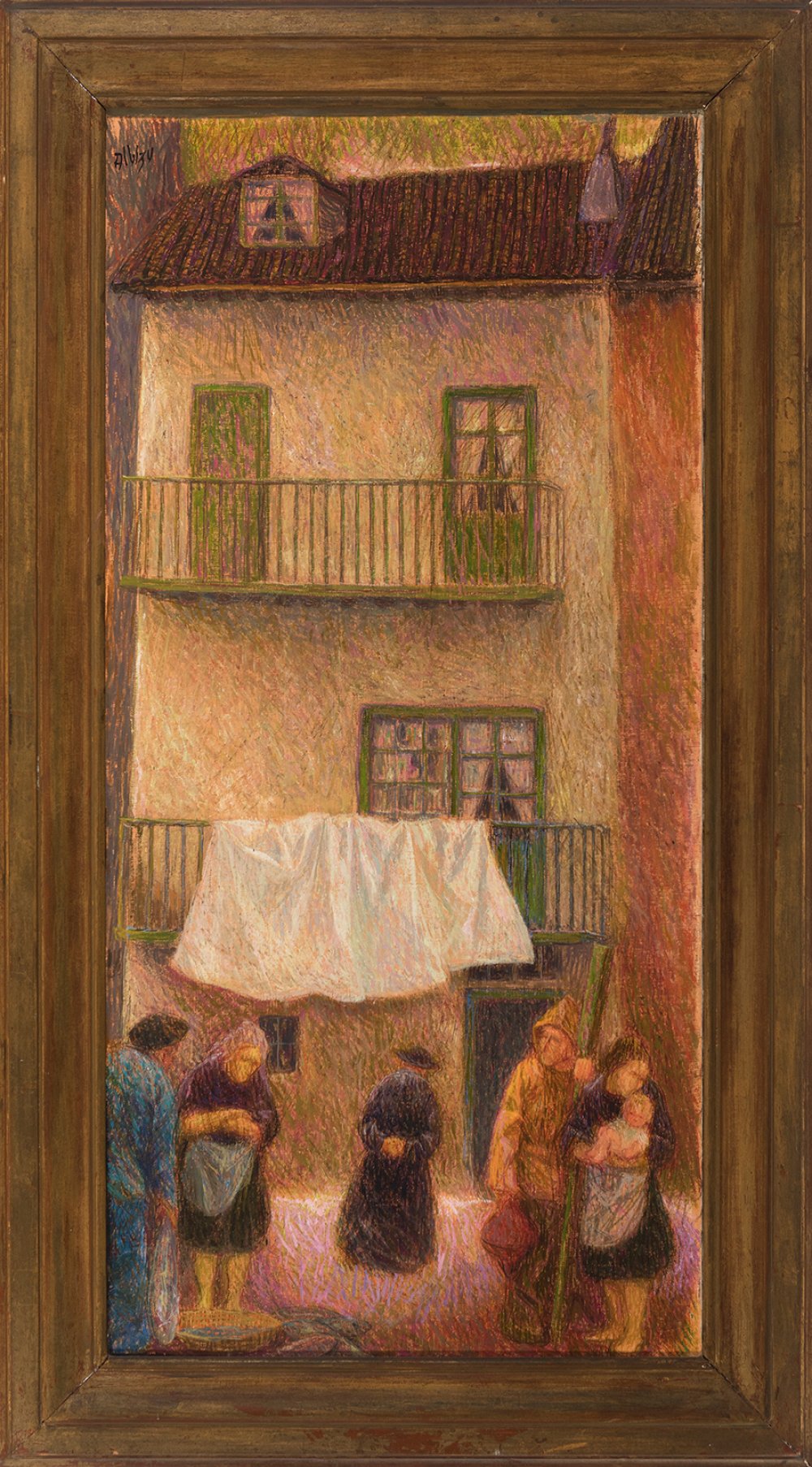30
ENRIQUE ALBIZU (Valencia, 1926 - Fuenterrabía, 2014) ."Village scene".Oil on canvas.Signed in the
1/4
Description
ENRIQUE ALBIZU (Valencia, 1926 - Fuenterrabía, 2014) .
"Village scene".
Oil on canvas.
Signed in the upper left corner.
Measurements: 81 x 33 cm; 98 x 55 cm.
Enrique Albizu was a Spanish painter, noted for his landscapes and portraits, a member of the so-called "third generation of the Bidasoa School". The son of a family of Basque origin, he was born in Valencia. He and his family lived in Madrid and returned to the Basque Country at the end of the Civil War. They took up residence in Irún and a long period of training began for the young Enrique Albizu: for four years he studied drawing in Irún itself, before travelling to Valencia and joining the Royal Academy of Fine Arts of San Carlos, and later in Madrid, the Royal Academy of San Fernando, where he completed his official training in 1949. He left Spain on a scholarship and extended his training at the Spanish Academy of Fine Arts in Rome for a year. However, he had already gained public recognition for his first exhibitions in the Basque Country in the second half of the 1940s. Until the mid-1950s he held a succession of exhibitions, also in Madrid and Alicante. In 1956 he went to Venezuela and took up residence in the capital, Caracas. During his four-year stay in America he worked on portraits in a singular way. In the 1960s he returned to Spain and settled permanently in the Basque Country. During this period his work became widely recognised and he held numerous exhibitions, both individual and collective. His work reached private collections all over the world and museums such as the Bilbao Fine Arts Museum, the San Fernando Royal Academy of Fine Arts and the San Telmo Museum. He was a member of the Real Sociedad Bascongada de Amigos del País.
"Village scene".
Oil on canvas.
Signed in the upper left corner.
Measurements: 81 x 33 cm; 98 x 55 cm.
Enrique Albizu was a Spanish painter, noted for his landscapes and portraits, a member of the so-called "third generation of the Bidasoa School". The son of a family of Basque origin, he was born in Valencia. He and his family lived in Madrid and returned to the Basque Country at the end of the Civil War. They took up residence in Irún and a long period of training began for the young Enrique Albizu: for four years he studied drawing in Irún itself, before travelling to Valencia and joining the Royal Academy of Fine Arts of San Carlos, and later in Madrid, the Royal Academy of San Fernando, where he completed his official training in 1949. He left Spain on a scholarship and extended his training at the Spanish Academy of Fine Arts in Rome for a year. However, he had already gained public recognition for his first exhibitions in the Basque Country in the second half of the 1940s. Until the mid-1950s he held a succession of exhibitions, also in Madrid and Alicante. In 1956 he went to Venezuela and took up residence in the capital, Caracas. During his four-year stay in America he worked on portraits in a singular way. In the 1960s he returned to Spain and settled permanently in the Basque Country. During this period his work became widely recognised and he held numerous exhibitions, both individual and collective. His work reached private collections all over the world and museums such as the Bilbao Fine Arts Museum, the San Fernando Royal Academy of Fine Arts and the San Telmo Museum. He was a member of the Real Sociedad Bascongada de Amigos del País.
Auction Details
Shipping
T&Cs & Important Info
Ask seller a question
ENRIQUE ALBIZU (Valencia, 1926 - Fuenterrabía, 2014) .
"Village scene".
Oil on canvas.
Signed in the upper left corner.
Measurements: 81 x 33 cm; 98 x 55 cm.
Enrique Albizu was a Spanish painter, noted for his landscapes and portraits, a member of the so-called "third generation of the Bidasoa School". The son of a family of Basque origin, he was born in Valencia. He and his family lived in Madrid and returned to the Basque Country at the end of the Civil War. They took up residence in Irún and a long period of training began for the young Enrique Albizu: for four years he studied drawing in Irún itself, before travelling to Valencia and joining the Royal Academy of Fine Arts of San Carlos, and later in Madrid, the Royal Academy of San Fernando, where he completed his official training in 1949. He left Spain on a scholarship and extended his training at the Spanish Academy of Fine Arts in Rome for a year. However, he had already gained public recognition for his first exhibitions in the Basque Country in the second half of the 1940s. Until the mid-1950s he held a succession of exhibitions, also in Madrid and Alicante. In 1956 he went to Venezuela and took up residence in the capital, Caracas. During his four-year stay in America he worked on portraits in a singular way. In the 1960s he returned to Spain and settled permanently in the Basque Country. During this period his work became widely recognised and he held numerous exhibitions, both individual and collective. His work reached private collections all over the world and museums such as the Bilbao Fine Arts Museum, the San Fernando Royal Academy of Fine Arts and the San Telmo Museum. He was a member of the Real Sociedad Bascongada de Amigos del País.
"Village scene".
Oil on canvas.
Signed in the upper left corner.
Measurements: 81 x 33 cm; 98 x 55 cm.
Enrique Albizu was a Spanish painter, noted for his landscapes and portraits, a member of the so-called "third generation of the Bidasoa School". The son of a family of Basque origin, he was born in Valencia. He and his family lived in Madrid and returned to the Basque Country at the end of the Civil War. They took up residence in Irún and a long period of training began for the young Enrique Albizu: for four years he studied drawing in Irún itself, before travelling to Valencia and joining the Royal Academy of Fine Arts of San Carlos, and later in Madrid, the Royal Academy of San Fernando, where he completed his official training in 1949. He left Spain on a scholarship and extended his training at the Spanish Academy of Fine Arts in Rome for a year. However, he had already gained public recognition for his first exhibitions in the Basque Country in the second half of the 1940s. Until the mid-1950s he held a succession of exhibitions, also in Madrid and Alicante. In 1956 he went to Venezuela and took up residence in the capital, Caracas. During his four-year stay in America he worked on portraits in a singular way. In the 1960s he returned to Spain and settled permanently in the Basque Country. During this period his work became widely recognised and he held numerous exhibitions, both individual and collective. His work reached private collections all over the world and museums such as the Bilbao Fine Arts Museum, the San Fernando Royal Academy of Fine Arts and the San Telmo Museum. He was a member of the Real Sociedad Bascongada de Amigos del País.
31st August -19th & 20th Century Arts
Sale Date(s)
Venue Address
Aragón 346, Barcelona
Calle Velázquez 7, Madrid
Carrer de Cirilo Amorós 55, Valencia
Barcelona
08009
Spain
General delivery information available from the auctioneer
Setdart offers Worldwide shipping
PICK UP IN ROOM: You can come and pick up your lots in our offices (Barcelona, Madrid or Valencia). At the moment of the withdrawal, you will be able to accept the current conditions of the lot by means of a document that you will sign.
YOU CAN SEND ANOTHER PERSON TO PICK UP: This person must present a signed authorization that you can find in our web page by accessing from BUY AT SETDART- LOGISTICS-DOWNLOAD AUTHORIZATION DOCUMENT. You can also send an e-mail with the requested data in AUTHORIZATION DOCUMENT to admin@setdart.com
Important Information
25% buyer´s premium
21% buyer´s premium at www.setdart.com












